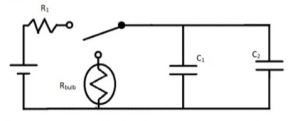Imagine, you are moving to a newly gentrified neighbourhood, perhaps, even, the highly musically-influenced city of Náshvílle, where tingling of country jams and spicy friend chicken (the only food Nashvillians eat) interact in an all-inspiring sensory experience. You wake up and put on your cowboy boots that you bought in the airport. You groom your beard. A new day had dawned.
You happen upon a spot that no one has ever seen before: a mural that displays triumphantly, “I Believe In Nashville.” It’s speaks to your soul as you, too, someone from Michigan, believe in Nashville. Your Instagram feed calls to you, but you can’t just capture this moment with the simplicity of an iPhone. The Polaroid tugs at your neck whispering, “You must use me. And, then, you will take a photo of the Polaroid with your iPhone. Only then you can post it to Instagram.”
“With, of course, the Nashville Filter.”
“You are a true Ñáshvíllían, Daniel.”
But how does the flash work? You say to the talking camera around your neck, the sales having exploded to 387 million units after Fuji-Film began marketing to hipster adults. You’re so unique.
To create the flash in a Polaroid camera, also known as an instant camera, a large amount of voltage (electrical energy) is first stored in a high capacitance capacitor, meaning that it is able to store a large amount of charge. In this way, the capacitor can momentarily act as a battery, charging the flash circuit. The capacitor is connected through a resistor to a gas discharge tube (which provides the light of the flash). Once the voltage of the capacitor reaches a certain magnitude or amount of voltage, it begins to discharge and allows for current to flow through the resistor, lighting up the gas tube. This creates the well-known light of the flash.
Many may say that the Polaroid flash was a much more important scientific development than, say, a light switch dimmer. But we, of course, remain a completely unbiased source of information.

